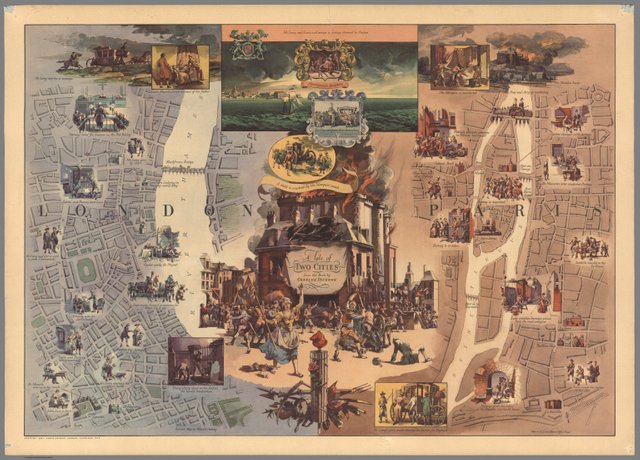Dicken's The French Revolution in A Tale of Two Cities
The French Revolution occurred from 1789 to 1799, and it was a period of social and political upheaval in France. In that short span of time, the monarchy which had ruled France for centuries, was totally overthrown.
Dickens used Thomas Carlyle’s History of the French Revolution , published 1837, as a reference for his famous tale that is set against the backdrop of this tumultuous period in French history.
The author’s own political views and feelings come into play during the course of the novel. Though Dickens sympathized with the revolutionaries, he also criticized their cruelty and mob mentality.
The Beginning of the French Revolution
The beginnings were similar to the American Revolution. The National Assembly formed in a reaction against the King Louis XV1’s demand for higher taxes. Overburdened and made destitute by the rise of the price of bread and other necessities, the people revolted against the aristocracy.
A mob of angry citizens created an uprising and stormed the Bastille, and the revolution began.
The famous scene with the broken wine cask outside Defarge’s shop, which depicts out of control chaos is a foreshadowing of the trouble to come, with the spilled wine being replaced with blood.
The Two Cities: Paris and London
For those associated with the French aristocracy, Paris became a city of unrest and fear and London, a safe haven. As the storm of political unrest hit, many members of the French aristocracy heeded the warning signs and fled to England. They also hastened to secure their money in foreign banks.
Many of those who left the country at the first sign of trouble were able to escape the guillotine.
A Tale of Two Cities begins just before the revolution gets underway. Charles Darnay, born Charles St. Evrémonde, has been living in England and has changed his name to disassociate himself with the injustice of the French aristocracy and his uncle, the hated Marquis Evrémonde. He risks his life to return to Paris to save the family servant, Gabelle, from prison.
At this point, it is dangerous for anyone with an association with the aristocracy to return to the city and risk arrest.
A Tale of Two Cities and the Reign of Terror
The Reign of Terror began under the leadership of Robespierre. Louis XV1 and Marie Antoinette were executed in 1793. During the Reign of Terror, from 1793 to 1794, many innocent lives ended at the guillotine.
Madame DeFarge’s knitting appears innocent, but she is actually stitching in the names of those destined to die by the revolution’s hands. This is a key symbol of the revolution, which tries to bring about change with violence and vengeance.
When Charles Darnay is arrested and sentenced to the guillotine, his lookalike, Sydney Carton, makes a noble sacrifice. The book compares his personal sacrifice with the unjust bloodshed of the revolution.
Though Dickens opposed their methods, there remains hope the transformation will pave the way to a better future for France.
Sources

